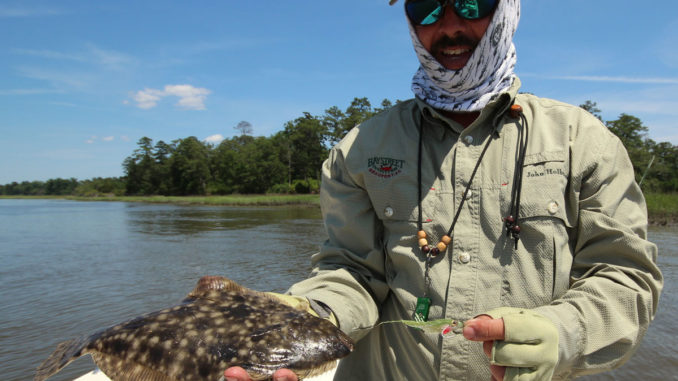
Buy a fly-tying vice, match the hatch and learn
In the not so distant past, choices for inshore fishing were limited to a handful of different items, especially in the world of artificial lures. Standard fare included the classic redhead jig with a white or chartreuse soft-plastic curlytail trailer and maybe a plug or two borrowed from the freshwater box.
Those are proven fish catchers, but today’s anglers have many more choices available and can find a lure that matches whatever the conditions call for, greatly improving success when using artificials.
Flies used in saltwater are no exception. Early on, flies for redfish consisted of general saltwater patterns like the Lefty’s Deceiver, a baitfish pattern, or the Clouser Minnow, which closely resembles a jig. As the sport of saltwater fly-fishing evolved, so did the flies and materials used to create them. Now, flies are not only designed for particular species of fish, but also for very specific conditions and areas.
Searching through the flies at any local fly shop, anglers can find many patterns unique to that shop. Asking how they came about or what their inspiration was will most often return answers about a specific situation and a need for a better fly. “Matching the hatch” is a term often used by fly fishermen, referring to imitating what the fish are eating. Sometimes elaborate and sometimes simple, for the uninitiated, flies seem more difficult to create than they actually are.
Creating your own flies is a great way to delve deeper in the sport of fishing.
“Catching a fish on a fly you tied yourself increases the whole experience, and it is just a good feeling,” said John Holbrook, a fly-tier and fly-tying instructor at Bay Street Outfitters in Beaufort.
Fly-tying is a way of really getting into a fish’s head. It requires an angler to think about what the fish is eating and the forage it is attracted to. Often, saltwater flies are not a spot-on imitation, but rather an imitation of certain characteristics of bait. A strip of rabbit fur off the back of a hook may imitate the big claw of a fiddler crab or a few tufts of bucktail may become a fleeing shrimp. The thought process behind fly-tying spills over into all aspects of angling; the same decisions required to create a certain fly can also determine which bait or lure to use and how it should be presented. Constantly thinking about the fish and what triggers them to eat, fly-tiers often do a better job when it comes to closing the deal, even when not fishing with flies.
Getting started in fly-tying is not difficult. A seasoned tier may have hundreds of dollars invested in material and equipment, but often that is from years of collecting and upgrading.
“A good way to start is to buy an inexpensive kit and take a class or search out videos on-line,” Holbrook said.
Kits range in price from a few dollars to a few hundred, depending on amount of materials and quality of equipment, but for saltwater patterns, it is sometimes easier to just buy the bare essentials: a hook vise, bobbin (thread holder), and enough material for a select few patterns. An on-line search for “redfish fly-tying” or “saltwater fly-tying” will return a myriad of instructional videos on fly tying and most include a list of materials.
“Start out with something simple that contains the saltwater basics like fiber, flash and weighted eyes,” Holbrook said.
Which bait to imitate with a fly depends a lot of the fish and where and when they are feeding. Small crab patterns in Nos. 2 and 4 hook sizes are a great choice for reds tailing on the flood tide because fiddlers are reds’ No. 1 meal when they’re nosing through the short spartina grass. On the low-tide flats, schooled up reds will still take a crab, but shrimp and baitfish come into play as well. It really depends on what the fish are keying in on and what is available to them. Reds scattering schools of mullet in every direction is a good indication that it is time to tie on a big fly, like a 5-inch baitfish pattern.
Capturing bait and studying its colors and movements, fly-tiers find inspiration for new patterns almost every trip out and new developments in synthetic materials for fly-tying makes creating new patterns easier than ever before. Every area is unique, and the behavior of both bait and predator will vary somewhat from place to place, even when only a few miles apart. On the same day, reds in Charleston Harbor may be keying on small shrimp, and reds in the Broad River may have blue crab on the brain. Mud minnows may posses more coloration in Myrtle Beach than they do in Hilton Head. Fly-tiers have the ability to matches the local forage and create something that works extremely well for a particular group of fish.
Often viewed as something only practiced by dedicated fly fishermen, fly-tying can actually help anyone improve as an angler simply by opening their eyes to new ways of looking at how fish and their prey interact.



Be the first to comment